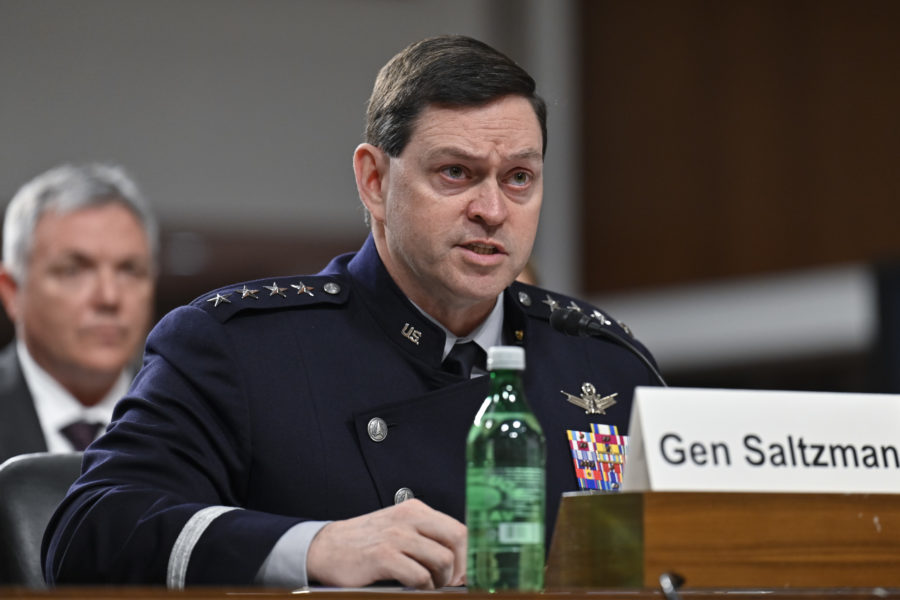
Saltzman: China’s Anti-Satellite Weapons Are ‘Compounding Problem We Have to Figure Out’ (Image Credit: airandspaceforces)
Chief of Space Operations Gen. B. Chance Saltzman highlighted the danger posed by China’s anti-satellite (ASAT) missile capabilities as one of the Space Force’s biggest challenges as the young service nears its fourth birthday.
Saltzman has frequently described China’s 2007 test of its direct ascent ASAT weapon as a turning point in the history of military space operations. Speaking at the Atlantic Council on Nov. 15, he warned that such weapons remain a serious concern.
“That’s a double problem because they can take out satellites, and the debris created by those destructions can cause other problems in orbit,” Saltzman said. “It’s a compounding problem we have to figure out.”
Debris from that 2007 ASAT test still lingers in orbit, as does debris from a more recent test by Russia. As the domain becomes more crowded and complex, the Space Force must track existing threats while also trying to deter future ones.
Key to that deterrence is the Space Force’s pivot toward a more resilient architecture for its satellites in orbit and its networks on the ground.
The Space Development Agency has taken a lead on such efforts, working to build a proliferated constellation of hundreds of satellites in low-Earth orbit (LEO) for missile tracking/warning and data transport. The strategy, articulated by SDA director Derek M. Tournear, is that the cost of shooting down one satellite will be greater than the cost of fielding one.
In addition to building more, smaller satellites, Saltzman said the Space Force must work on ways for satellites to defend and protect themselves, from both kinetic (physical attacks such as missiles) and non-kinetic (electronic or cyber attacks) attacks.
For non-kinetic defense capabilities, Saltzman cited the importance of designing validated tactics to counter such cyber attacks and training operators to use these tactics in a timely manner. The goal is to mitigate the effects of potential attacks in a contested space environment and ensure the satellites’ can continue to function.
The urgency is driven by the idea of denying adversaries a first-mover advantage, as Saltzman puts it.
Another concern with China is the transparency in information sharing that can affect safety. Saltzman highlighted the need for a proactive approach to communication, particularly in scenarios where there is a potential for objects to collide in space.
The Space Force provides warnings unilaterally when detecting two objects that could come in close proximity, regardless of the parties involved, including China. However, the response is sometimes omitted on their end, resulting in dangerous situations, Saltzman said.
The possibility of China not being transparent with their TTPs [Tactics, Techniques, and Procedures] and their CONOPS [Concept of Operations] is a concern Space Force Chief Technology and Innovation Officer Dr. Lisa Costa has voiced recently as well.
The Pentagon, in its latest annual China report released in October, warned that China prioritizes controlling space-based information, which involves preventing adversaries from using space for gathering information and communication
China is also actively investing in space-based intelligence and actively developing counterspace capabilities, including kinetic-kill missiles and ground-based lasers.








